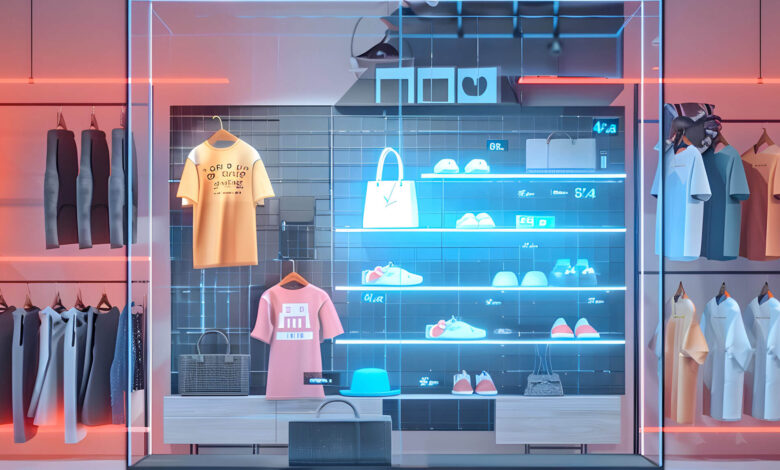
Walk into any modern store, and you’ll notice something different—sleeker shelves, interactive screens, and displays that almost seem to “think.” That’s because they do. Artificial intelligence (AI) is quietly reshaping retail displays and store fixtures, making them more sustainable and cost-effective than ever before.
As a retail designer with over a decade of experience, I’ve seen firsthand how wasteful traditional methods can be. Companies used to build displays based on gut feelings, leading to costly mistakes—entire sets of store fixtures discarded after a single season, energy-guzzling lighting left on overnight, and materials chosen for looks rather than eco-friendliness.
But AI is changing all that. Here’s how.
- AI Designs Smarter Displays (So You Waste Less Money and Materials)
Ever notice how some retail displays just fit perfectly? That’s no accident. AI-powered design tools now analyze:
- Store dimensions
- Customer foot traffic patterns
- Seasonal trends
Real-world example: A major home goods retailer (who asked not to be named) used AI to redesign their floor displays. By optimizing spacing, they reduced material costs by 22% while improving product visibility.
Key benefits:
✔ Fewer prototypes (AI simulates designs before physical production)
✔ Modular designs (fixtures can be rearranged instead of trashed)
✔ Material savings (AI suggests exact cutting patterns to minimize waste)
- No More Guessing Games: AI Predicts Exactly What Displays You Need
Remember those holiday displays that sat unsold until February? AI stops this waste through:
Demand forecasting that analyzes:
- Past sales data
- Local buying trends
- Even weather patterns
Case study: A European fashion chain used AI to predict which window displays would perform best. Result? 30% less overstock of seasonal fixtures.
- The Energy-Saving Secret: AI as Your Nighttime Store Manager
Those glowing retail displays look beautiful—until you get the electricity bill. AI solves this with:
- Motion-sensitive lighting(brightens only when shoppers approach)
- Climate-adjusted displays(reduces brightness in well-lit areas)
- Predictive maintenance(fixes issues before they waste energy)
Shocking stat: Stores using AI-powered lighting systems report 18-35% lower energy costs annually.
- From Trash to Treasure: How AI Enables a Circular Economy
The ugliest truth in retail? Most store fixtures end up in landfills. AI is changing this through:
- Material tracking systemsthat flag when fixtures can be refurbished
- Automated resale platformsfor used displays
- Smart recyclingthat sorts materials with 95% accuracy
Innovator spotlight: A West Coast boutique now reuses 80% of its display components thanks to AI tracking.
- The Hidden Cost Cutter: AI in Manufacturing
Beyond design, AI slashes production expenses by:
- Optimizing supply chains(finds local, sustainable material suppliers)
- Robotic precision(cuts assembly errors by up to 40%)
- Virtual testing(catches design flaws before production)
Bottom line impact: One mid-sized retailer saved $250,000 annually just on fixture production.
The Future Is Already Here
During a recent store visit in Chicago, I watched an AI system adjust display lighting in real-time as clouds passed outside. Nearby, a digital screen changed its featured products based on who was walking by. This isn’t sci-fi—it’s today’s retail reality.
For store owners hesitating about AI, consider this:
- Sustainable displays attract eco-conscious shoppers
- Energy savings directly boost profit margins
- Waste reduction cuts costs andhelps the planet
The question isn’t whether you can afford to adopt AI for your retail displays and store fixtures—it’s whether you can afford not to




